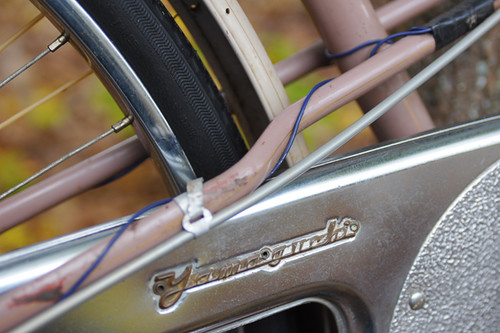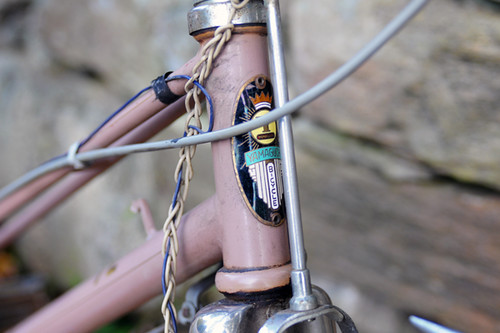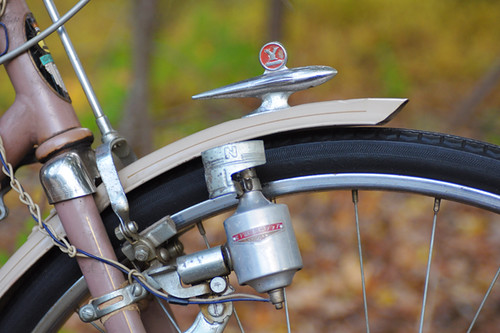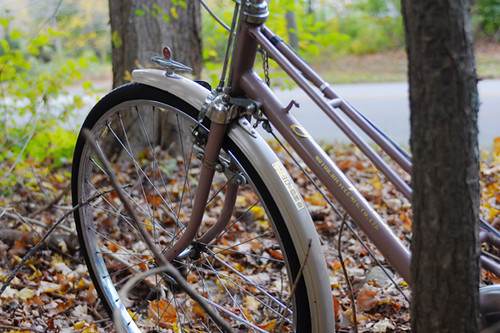Georgia has been left behind. I won't say I'll never go back, but after 2 weeks and 2 days at Crooked River State Park in St. Marys, Georgia I think I've had enough of it for now. Crooked River is a very nice park. It has lovely trails. The people were friendly. For the most part, I enjoyed my time there. But it was cold. And it rained. A lot. Seemed like every other day it was raining.
But a change in location does not always mean there will be a good change in the weather. I came south, into Florida hoping for a little more warmth. The first (and second) morning here I woke up with frost on the windows! Night time temps have been in the low 30s and daytime highs have been in the low 50s all this year. I can say that “this year” because it is only five days into the new year. I sure hope I'm not able to say that for very much longer!
I didn't take a lot of pictures at Crooked River. Like my friend TJ says, a tree is a tree, a river is a river, and one pretty much looks like another. I didn't take many sunset or sunrise photos either. The campsite was in a shaded area and it was hard to tell when the sun was coming up, when it finally decided to show it's face. There were a few sunsets that had a nice “after glow” but, well, they didn't get photographed either.
I took a lot of walks, just to keep warm. And spent a few hours in the library, but it was closed half the time I was there. Silly Holidays, you know?
I'm into my fifth month of traveling. It's really hard to believe that so much time has gone by. Speaking of time, I have no concept of time. I seldom “know” what time of day it is. Or how much time has passed since the last time I ate. I eat when I get hungry, not according to some established schedule.
Many of my posts while on the road have mentioned the weather. Actually, most of them have. Thing is, the weather is what governs what I do and when I do it and whether I enjoy it or not. And, the weather is the one thing that I have no control over. There is nothing I can do about it. I don't affect it, it affects me. It is what it is.
This morning I awoke to the sun rising over the tree tops. A short while later I saw clear blue skies. So, even though it was 30-something I went for a walk in the woods. The movement warmed my blood. The trees and birds and unknown somethings scurrying in the underbrush warmed my soul. The sun is shining. It's a beautiful day. What more could I ask for? (Warmer temperatures, that's what!)

My campsite at Crooked River State Park. The tent was purchased that morning. After coming back to the campground the previous night and finding someone had pulled their rig into my site (even though my tag was on the post and my bicycle chained to the picnic table), I decided that I needed a “presence” in camp even when I wasn't there. It's been a godsend, especially with the cool/cold weather. A small electric heater makes it a cozy place in the evenings. And, no, I don't sleep in the tent – a cot and warm sleeping bag in the van are my nightly resting place.

A tree is a tree. But these are at Crooked River. Really.

The roots of a tree that was long ago downed, by what? The forces of Nature or those of Man? Even in “death” it is Magnificent.

A palm frond, after the rain.
 We see gold finches here in the spring and the fall when they are migrating. I don't know where they go to the north or south of us. They are strange little birds that the house cats find easy to catch which I don't like. The first photo is of one I found on the shoe scrapper outside of our front door. It seemed very tired and I assumed hot as it was a very hot day. So I tried to set a bowl of water by it but it flew away. I do hope it servived. The other photo is one I took of a gold finch eating the seeds off of an Apache plume bush near a creek. These cute little finches do eat lots of seeds off of my zinnas, and small sunflowers.
We see gold finches here in the spring and the fall when they are migrating. I don't know where they go to the north or south of us. They are strange little birds that the house cats find easy to catch which I don't like. The first photo is of one I found on the shoe scrapper outside of our front door. It seemed very tired and I assumed hot as it was a very hot day. So I tried to set a bowl of water by it but it flew away. I do hope it servived. The other photo is one I took of a gold finch eating the seeds off of an Apache plume bush near a creek. These cute little finches do eat lots of seeds off of my zinnas, and small sunflowers.















 My campsite at Crooked River State Park. The tent was purchased that morning. After coming back to the campground the previous night and finding someone had pulled their rig into my site (even though my tag was on the post and my bicycle chained to the picnic table), I decided that I needed a “presence” in camp even when I wasn't there. It's been a godsend, especially with the cool/cold weather. A small electric heater makes it a cozy place in the evenings. And, no, I don't sleep in the tent – a cot and warm sleeping bag in the van are my nightly resting place.
My campsite at Crooked River State Park. The tent was purchased that morning. After coming back to the campground the previous night and finding someone had pulled their rig into my site (even though my tag was on the post and my bicycle chained to the picnic table), I decided that I needed a “presence” in camp even when I wasn't there. It's been a godsend, especially with the cool/cold weather. A small electric heater makes it a cozy place in the evenings. And, no, I don't sleep in the tent – a cot and warm sleeping bag in the van are my nightly resting place. A tree is a tree. But these are at Crooked River. Really.
A tree is a tree. But these are at Crooked River. Really. The roots of a tree that was long ago downed, by what? The forces of Nature or those of Man? Even in “death” it is Magnificent.
The roots of a tree that was long ago downed, by what? The forces of Nature or those of Man? Even in “death” it is Magnificent. A palm frond, after the rain.
A palm frond, after the rain.

 Everyday, climbers inquire about thinly covered crevasses, glacier conditions, or that “bergschrund” on top of the Emmons. And we’re here to share what we know about the
Everyday, climbers inquire about thinly covered crevasses, glacier conditions, or that “bergschrund” on top of the Emmons. And we’re here to share what we know about the  So why are we sharing this geeky science information? Well, we like it, but also because climbers have been noting the PVC poles buried on the glacier and have asked, “What’s the plastic pipe all about?” Those PVC poles are the measuring sticks. If you keep your eyes peeled on your next summit attempt, you may note one or two of them on the Muir Snowfield, Nisqually, Emmons, or Ingraham Glaciers. If you do see them, please do not disturb or remove them.
So why are we sharing this geeky science information? Well, we like it, but also because climbers have been noting the PVC poles buried on the glacier and have asked, “What’s the plastic pipe all about?” Those PVC poles are the measuring sticks. If you keep your eyes peeled on your next summit attempt, you may note one or two of them on the Muir Snowfield, Nisqually, Emmons, or Ingraham Glaciers. If you do see them, please do not disturb or remove them. 




 Last evening was a low point for me... I yelled at someone on the Minuteman Trail. I was cycling home after a ride, and the trail was more or less empty. I am normally ever-vigilant for dogwalkers and baby carriages suddenly appearing out of nowhere, but this time I had let down my guard. I was going faster than I normally do on the trail, when from around the bend, three cyclists - traveling three abreast and taking up the entire width of the path - came barreling toward me at a similarly unadvisable speed. They were chatting and the cyclist who was headed for a direct collision with me had her face turned toward her friends instead of looking ahead of her. Time froze and I kept expecting that any instant now she'd see me and get out of my line of travel, but she didn't. Not wanting to end up in the bushes or in a pile of bikes and limbs, my mind went blank and I heard myself scream "MOVE!" in a tone of voice that was so menacing that I even scared myself.
Last evening was a low point for me... I yelled at someone on the Minuteman Trail. I was cycling home after a ride, and the trail was more or less empty. I am normally ever-vigilant for dogwalkers and baby carriages suddenly appearing out of nowhere, but this time I had let down my guard. I was going faster than I normally do on the trail, when from around the bend, three cyclists - traveling three abreast and taking up the entire width of the path - came barreling toward me at a similarly unadvisable speed. They were chatting and the cyclist who was headed for a direct collision with me had her face turned toward her friends instead of looking ahead of her. Time froze and I kept expecting that any instant now she'd see me and get out of my line of travel, but she didn't. Not wanting to end up in the bushes or in a pile of bikes and limbs, my mind went blank and I heard myself scream "MOVE!" in a tone of voice that was so menacing that I even scared myself.



















